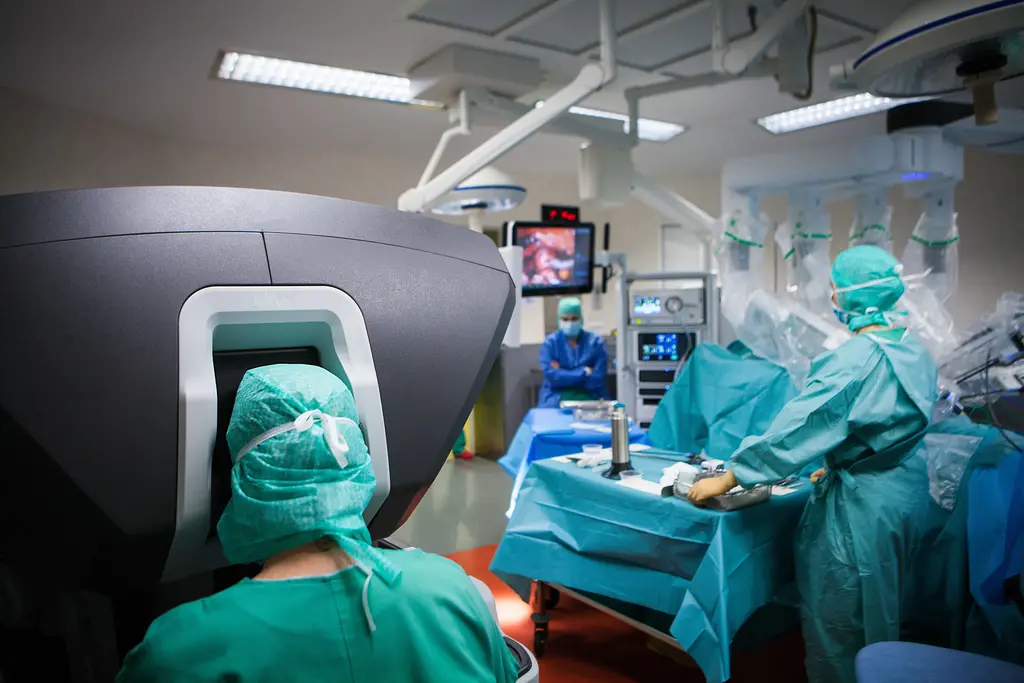From diagnosis through to discharge, surgical care involves various key teams. While these teams are fundamentally interdependent, they often function in relative isolation from one another. Each team focuses on its specific responsibilities before handing over to the next, which can lead to fragmented care.
In this post, we’ll explore how this division reflects and perpetuates the creation of silos within surgical environments. We’ll also discuss how these silos can affect the quality and efficiency of perioperative care. Additionally, we’ll share some strategies to help overcome communication barriers, enhance collaboration, and leverage our combined strengths to achieve optimal care standards.

### More Than Just a Business Buzzword
Silos, as you might have heard, are everywhere nowadays. Ranked #20 on Forbes’ list of most annoying business jargon, talk of “breaking down silos†has become a common refrain in boardrooms and workshops. It strikes fear into the hearts of anyone hoping for a smooth meeting!
The phrase’s popularity likely stems from its universal applicability. Many of us have witnessed issues caused by poor communication between departments. For instance, surgical techs not communicating with sterile processing staff, anesthesiologists not collaborating with recovery teams, or surgeons working in isolation. Over time, these behaviors evolve to prioritize the goals of individual teams over the organization as a whole. Inefficiencies compound, patterns repeat, and silos form.
In her book *The Silo Effect*, anthropologist Gillian Tett (chair of the editorial board and U.S. editor-at-large of the *Financial Times*) offers a broader perspective on these dynamics. She argues that silos within organizations represent a form of systemic fragmentation, creating situations where departments operate independently, like “the right hand not knowing what the left is doing.†Drawing from the 2008 financial crisis, she describes how large investment banks structured themselves into competing professional tribes, each with distinct targets, jargon, incentives, and identities. Sound familiar?

### Beyond the Cultural Bubble
Tett also explores the mental silos individuals construct based on their backgrounds and cultural experiences, leading to tunnel vision. People tend to see what aligns with their existing knowledge, surrounding themselves with like-minded perspectives and reinforcing similar decisions, often repeating the same mistakes.
Both structural and individual silos resonate strongly in surgical settings. We organize work around task divisions tied to traditional hospital structures and training programs, fostering strong tribal identities and ingrained behaviors. While these processes serve a practical purpose—they get things done—Tett notes that “humans need to create some structure to handle this complexity.â€
Thus, the focus shouldn’t be on eliminating silos entirely but rather on mastering them instead of letting them control us. Stepping outside our cognitive bubbles allows us to critically assess our processes, foster better teamwork, and improve outcomes objectively. How can we apply this to surgery? Could it enhance the quality of care we provide?

> “The challenge is not to rid ourselves of silos but to master them, instead of allowing them to master us.â€
>
> —Gillian Tett, *The Silo Effect*
### High-Risk Silos
Identifying silos in surgery is relatively straightforward, especially given the traditional, rigid organizational structures prevalent in most hospitals and care centers. (As a side note, see Tett’s chapter on the Cleveland Clinic and CEO Toby Cosgrove’s innovative approaches.)
These structures can be observed in relation to the different stages of perioperative care, mirrored in a patient’s surgical journey timeline (Fig 1). At each stage, sub-stages emerge based on geographical locations and specialized teams responsible for specific activities.
The intraoperative phase, highlighted in green in Fig 1, is particularly noteworthy since it involves the operating room (OR), utilizing a significant portion of a hospital’s resources. Here, multiple teams and their workflows converge, creating a complex and safety-critical interaction. Often, several processes run concurrently—one team focuses on one aspect while another prepares the next.
Research shows that this complexity makes the intraoperative period highly vulnerable to errors, information loss, and communication breakdowns—all classic symptoms of a silo mentality.

### Cross-Team Communication
A lack of communication between groups is perhaps the hallmark of a silo. Studies across industries such as aviation, nuclear power, and healthcare highlight communication failures as a leading cause of adverse events, sometimes with tragic consequences.
At the University of Toronto, researchers found communication failures in 30% of team exchanges in the OR, with one-third jeopardizing patient safety. In Washington State, communication issues contributed to injury in 43% of perioperative anesthesia malpractice claims, with nearly half occurring during the intraoperative phase. Most of these failures happened between anesthesiology and surgical teams—the two primary silos of the OR.
Beyond direct harm, OR silos create inefficiencies. Researchers in Chicago observed over 150 hours of direct interactions in the OR and identified 67 communication failures. Thirty-six percent pertained to equipment, and 24% involved keeping team members updated about the operation’s progress. These failures often resulted in delays and inefficiencies.
A 2017 systematic review examining process mapping in the intraoperative period similarly identified inefficiencies at points where workflows intersected between teams, such as patient transfers, instrument setups, and anesthesia handovers.

> “Communication failures frequently occur when the siloed workflows of two or more teams fail to interface as planned.â€
### A Universal Surgical Language
So, how can we address silos in surgery? Here, we turn to another area of study: data. Data silos refer to isolated data sets within one department, disconnected from the rest of the organization. While restricting access to data may seem logical, it often leads to unhealthy data practices—quickly fostering inconsistencies and redundancies. Data silos can spiral exponentially, making it nearly impossible for anyone to get a clear overview of operations.
In surgery, opening up data silos has consistently proven advantageous. Initiatives like Integrated Care Pathways, Enhanced Recovery After Surgery, and the Perioperative Surgical Home have significantly enhanced surgical outcomes and efficiency by improving access to quality resources and national data. When teams share data and pool resources, it fosters communication and helps break down traditional silos.
To this end, Incision has developed a universal surgical language. This methodology uses a stepwise framework to standardize and communicate surgical procedures and concepts, reducing errors and improving performance. Accessible through an online academy featuring over 750 courses filmed live in the OR, Incision Academy is accredited by the Royal College of Surgeons of England and boasts over 170,000 users globally today.

### Cross-Team Connectivity
Facilitating communication between teams on the work floor presents a greater challenge. It demands a level of connectivity previously unattainable without widespread mobile technology adoption. Fortunately, this is now changing.
Incision Assist, a mobile app, enables interdisciplinary teams to access unit-specific, team-specific, and surgeon-specific resources and protocols. Proven to enhance information access, increase familiarity with equipment, and streamline cross-team processes like patient turnover, Assist is revolutionizing OR efficiency.
In the holding bay, the pre-op team consults Assist to ensure everything is prepared for anesthesia, including the video-guided systems preferred by the anesthesiologist. Meanwhile, the OR is set up exactly as the surgeon prefers—equipment layouts are clearly mapped in the app. The surgery starts on time.
Midway through, recovery staff can easily verify details about drain placements by checking the surgical steps in the app. In recovery, the surgeon’s post-op instructions are crystal clear: no antibiotics, food after four hours, back to the ward, review tomorrow. Protocols are current, accessible, and just a click or scroll away—regardless of your role.

By connecting our silos rather than attempting to dismantle them, technology empowers us to harness the collective strength of our teams. At Incision, we’re committed to sparking conversations, bridging divides, and educating in engaging ways. When we learn together, we grow stronger together—join the conversation!
Follow us on [LinkedIn](#), [Twitter](#), or [Facebook](#).
Neck Brace,Cervical Collar,Neck Collar Brace,Cervical Brace
Hebei Dingli Medical Equipment Co., Ltd. , https://www.dinglimed.com